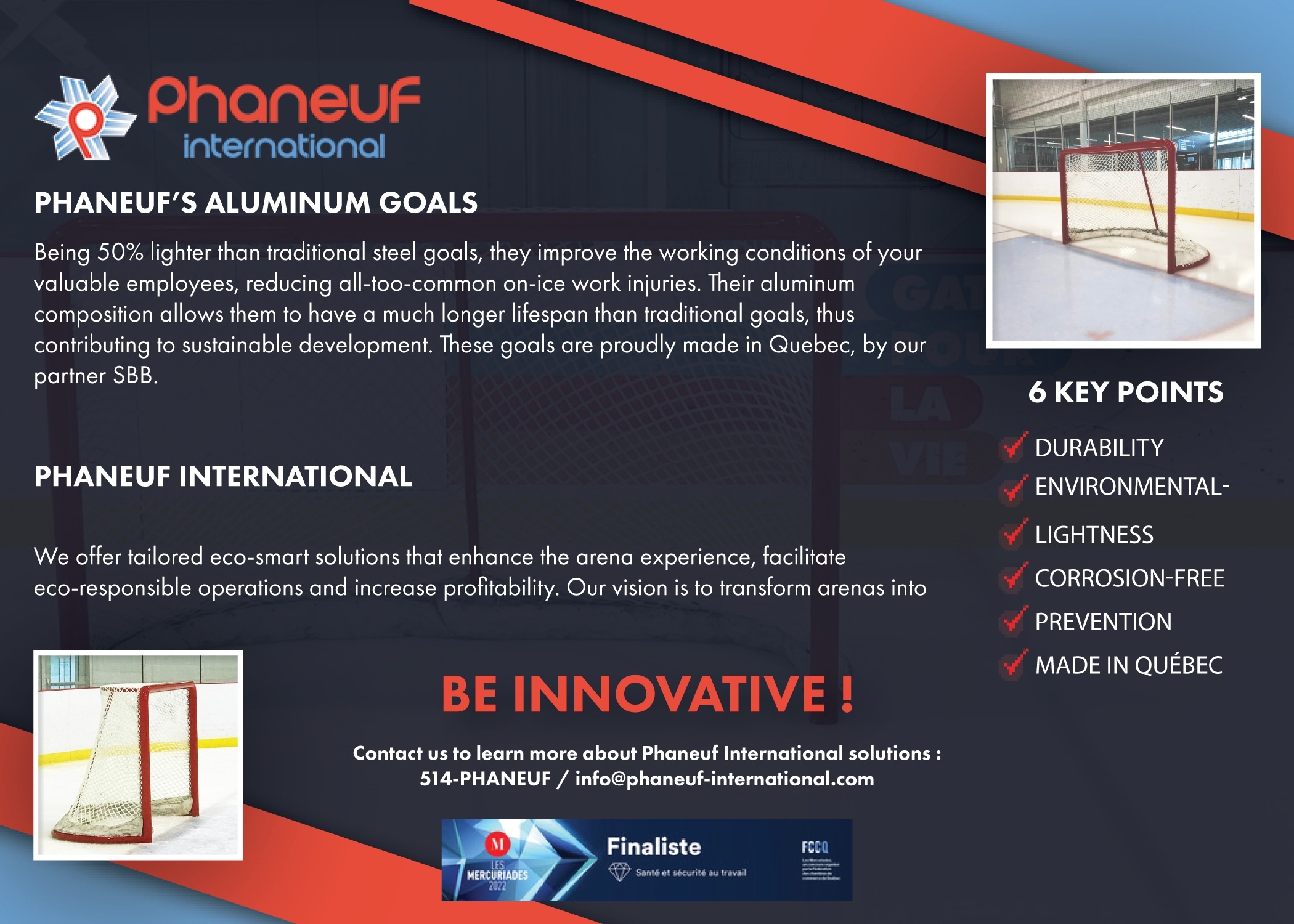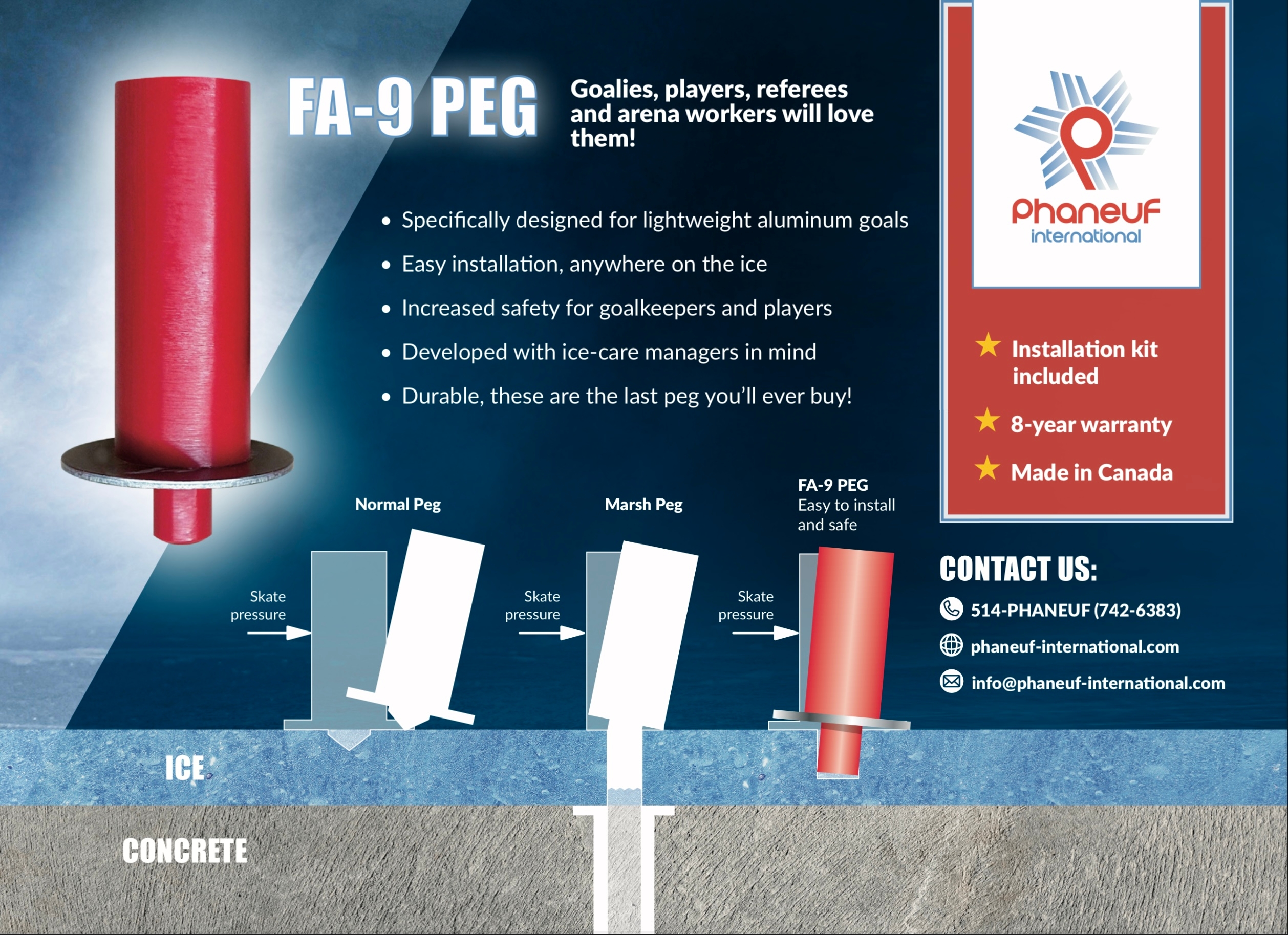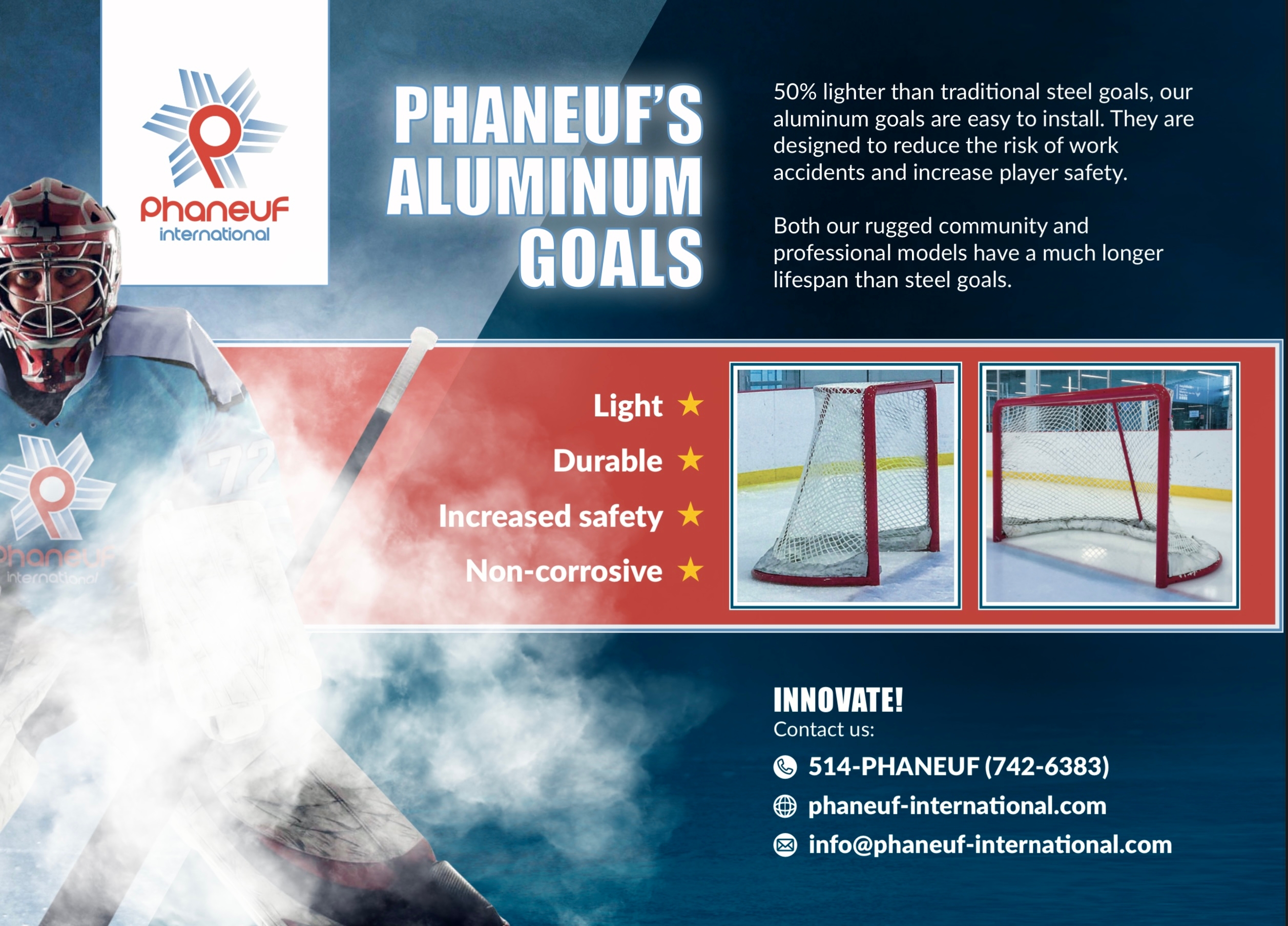Our aluminium goals

Did you know…?
According to INSPQ, 97,000 hockey-related injuries occur in Quebec each year. More than in combat sports and American football.
A professional hockey or ringette goal frame made of steel can weigh up to 150 lb (70 kg). The international ISO 11228-1 safety standard limits manual lifting by a single person to 55 lb (25 kg). So a steel hockey net can weigh up to three times that limit.
The ice rink safety and prevention guides recommend taking into account the weight of the goals to reduce the risk of injury. The heavier a goal, the more difficult it is to move and the more dangerous the impacts in the event of a collision.
Sanni Hakala, a Finnish women’s hockey star, is now in a wheelchair for life after crashing into a steel goal.
A 9-year-old child was crushed to death by a heavy steel net in Mauricie in 2013. The coroner recommended better awareness of the dangers of these structures.
There is no international standard governing the safety of hockey and ringette goals, according to the Normative Report #2289 of the CRIQ of Investissement Québec. Soccer, handball and even field hockey have one. But not our national sport...
Some insurers, such as the Fonds d’assurance des municipalités du Québec, have reportedly started to no longer cover civil lawsuits involving steel goals since there is a simple alternative solution… aluminum.
And for our rink workers : approximately 80% of the risks of workplace injuries in arenas and outdoor rinks are related to moving hockey goals. A single serious workplace injury costs on average $38,000 in compensation and medical expenses, according to IRSST.
Some facts that make you think, right?
Every year, players, workers and children are exposed to avoidable risks in our arenas and our public outdoor skating rinks. However, moving a steel goal alone, on and off the ice, remains a common practice, despite its excessive weight and the dangers it represents.
Aluminum goals, 50% lighter with the right anchors (FA9-PEG), are among the simple and effective solutions for securing ice rinks. Reducing the weight of goals means eliminating a danger at the source.
---------
Do you know the history of our new aluminum goals?
At Phaneuf, we first created a remotely guided goal to dance one day with our self-driving ice resurfacers. However, without our groomer to dance, this goal became obsolete.
Given the urgent need to prevent workplace accidents and increase player safety on the ice, we wanted to make a difference. During the improvement of our remote-guided goal regarding its heavyweight, the idea of creating an aluminum goal came up. Being 50% lighter than a traditional steel goal, it improves the working conditions of the goalkeepers.
The environment being at the heart of our values at Phaneuf, their aluminum composition allows them to have a much longer life span than traditional goals, thus contributing to sustainable development.
These goals are proudly made here in Quebec by our partner SBB. SBB specializes in the design of emergency towers and structures designed by aluminum extrusions. Their passion for innovation positions them as world leaders in the manufacture of aluminum products. Present in more than 55 countries, their international reach is an asset for the growth of Phaneuf International #teamphaneuf .
Did you order your goal pairs?
In action in more than 40 arenas in Quebec, Ontario and New BrunswickFollow us to not miss anything!
Solutions to your challenges
- No need for physical effort to move heavy conventional hockey goals and risk workplace injuries and accidents while on the move.
- Aluminum goals anchor to the ice with our PEG FA-9.



